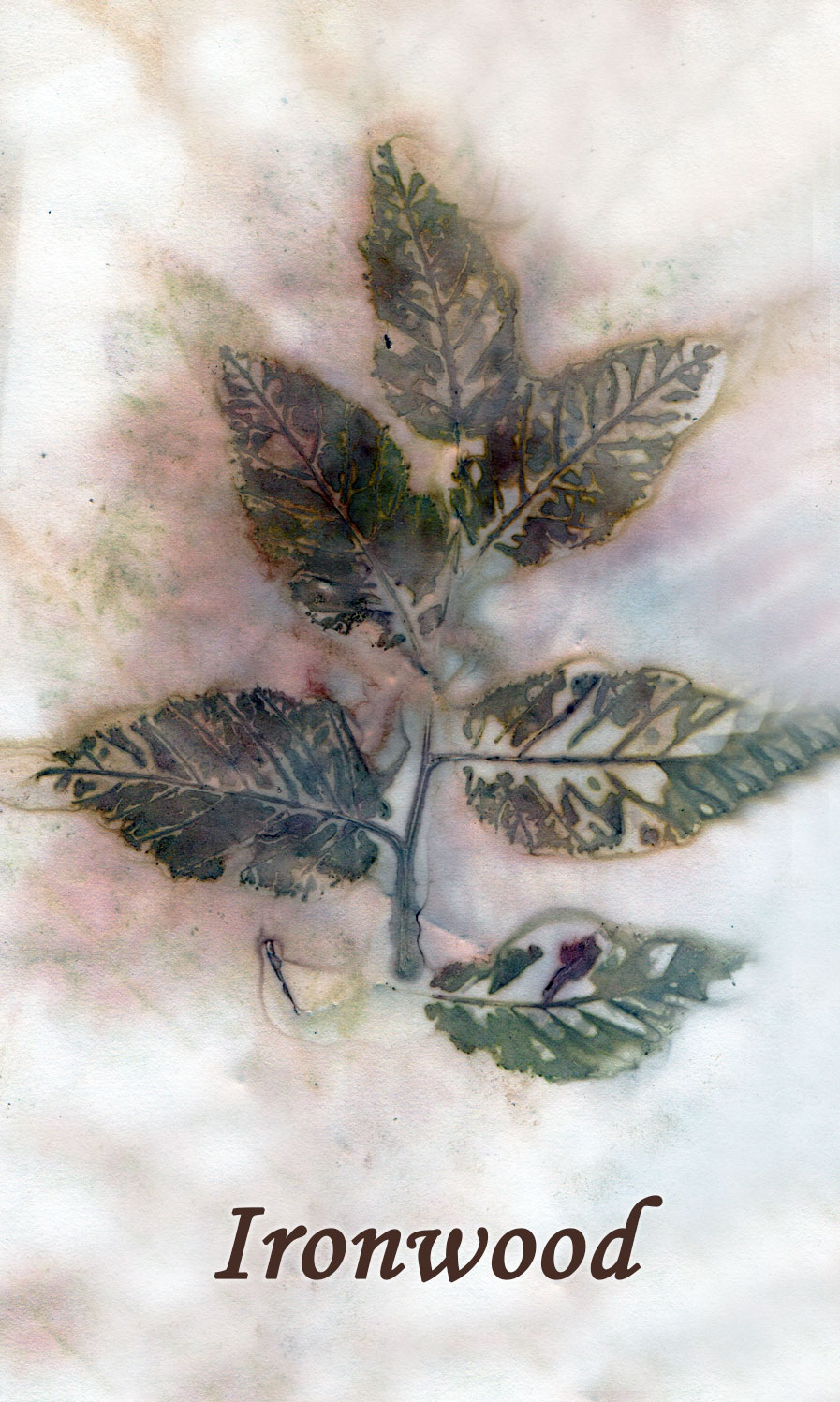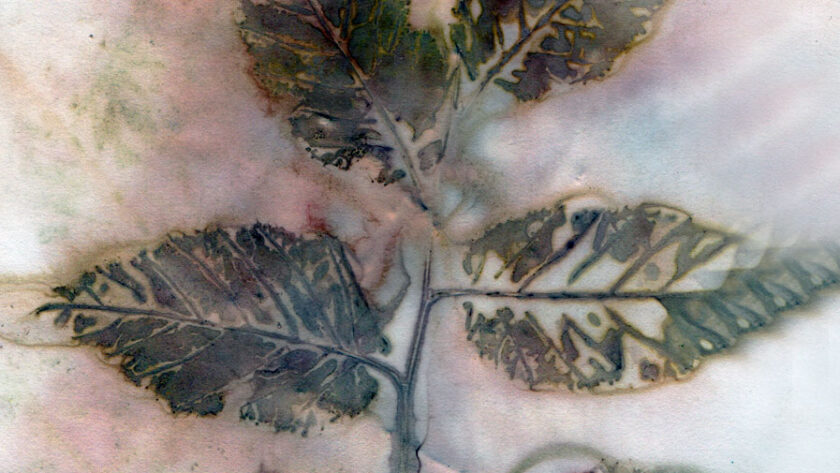
There are actually two tree species that are known as both “hornbeam” and “Ironwood” along the US East Coast and into the midwest: The American Hop Hornbeam (Ostrya virginiana) and the American Hornbeam (Carpinus caroliniana). After doing a lot of research and interaction with both of these trees, I see them as interchangeable. First, they are both in the Beech family (Order: Fagales, Family: Betulaceae). They actually have a very similar growth habit and look to their bark (like muscles), their wood is quite similar, and the hop-looking fruits are similar on both trees. Thus, if you can find either of these trees, you can apply the information I’m sharing. I have primarily focused on Ostrya Virginiana (Ironwood/Hop Hornbeam) in my comments here as it is the more dominant tree in my specific ecosystem.
This post is part of my Sacred Trees in the Americas series. In this series, I explore the magic, mythology, herbal, cultural, and divination uses, with the goal of eventually producing a larger work that explores many of our unique trees located on the US East Coast. Other trees in this series include Witch Hazel, Staghorn Sumac, Chestnut, Cherry, Juniper, Birch, Elder, Walnut, Eastern White Cedar, Hemlock, Sugar Maple, Hawthorn, Hickory, Beech, Ash, White Pine, Black Locust, and Oak. For information on how to work with trees spiritually, you can see my Druid Tree Working series including finding the face of the tree, communicating on the outer planes, communicating on the inner planes, establishing deep connections with trees, working with urban trees, tree energy, seasonal workings, and helping tree spirits pass.
The Ironwood (Ostrya Virginia) has many names in the US, including leverwood, ironwood, Indian cedar, black hazel, deer wood, hardtack, and Hop Hornbeam. These names can teach us quite a bit about the uses of this tree.
Ecology
Ironwood is a small, native tree to the Eastern and Midwest in the United States. It is an understory tree, and thus, even the largest specimens are typically under 40 feet tall (I have yet to see one even that tall). These trees are widely dispersed in the US, spanning from Minnesota and down to parts of Louisana and the whole way up the eastern seaboard to Maine–and everywhere in between.
The most distinct feature of this tree is the muscle-like quality of the wood–the wood is a smooth gray and as it grows, it twists and turns, looking almost like biceps or muscles–this tree has clearly been working out! The tree has leaves like beech and can be mistaken for the American beech upon first glance. The trees often lean and grow crooked; the largest specimen here on our property is growing in a haphazard way over the stream and into the bank! The crown is often flat-topped and open, partially because it is a fully shade/understory tree.
I have always seen Ironwoods in forests or along streams, although their growth habit may be different outside of the Allegheny Mountains in Western PA. I typically see these trees 15-20 feet tall, often thriving in deciduous forests in large thickets. Most often, you can find them in deciduous forests growing alongside sugar maple, beech, oak, hickory, and birch. They are typically found in shady forests, on damp hillsides, and especially along the edges of streams, where they can handle occasional seasonal flooding and prevent erosion.
John Eastman writes about this tree in his Book of Forest and Thicket. He notes that the tree is important to wildlife. Birds, including pheasant, ruffed grouse, and northern bobwhites eat the catkins. In the winter months, warblers, foxes, the game birds above, and squirrels eat the nutlets. Beavers also use them in their building and white-tailed deer can eat the foliage, particularly in the winter.
Historical and Herbal Uses
The strength of these trees is incredible–the wood is very tight-grained, white, and quite dense. I cut some rounds a while ago for woodburning and had to significantly turn up the heat on my burner to make any mark (usually the highest is reserved for ash, hickory, or oak, but it had to go higher than those three!) Historically, it was used for handles and fence posts for this reason and while it has a small circumference, it is a mighty tree. As I described above, there is some historical record of this tree being used for handles and smaller wooden objects. However, primarily due to its size, it is not a tree that is part of the lumber industry. John Eastman notes that if you attempt to chop down this tree, the axe will literally bounce back at you–hence the well-earned name of “Ironwood.” Finally, Eastman notes that because of its density, its charcoal was once used in making gunpowder.
Erichsen-Brown in Medicinal and Other Uses of North American Plants describes a range of uses that Ironwood had in historical times in North America. Of the physical uses, the heartwood of the trees (the strongest part) were used for things requiring strength such as ox goads, cogwheels, handles, sleigh runners, and finishing poles. Erichsen-Brown notes that the Chippewa used the wood for the frames of their dwellings and as poles in wigwams.
Erichsen-Brown also notes some of the traditional Native American uses of the tree as medicine. The strong decoction of the heartwood of branches was used for a general tonic, having actions on the liver, kidneys, and muscles. A strong heartwood decoction was used for “auge” (general sickness), particularly with intermittent fever. It was considered an alterative, supportive of the liver function and for dyspepsia. The Chippewa specifically used the heart of the Ironwood along with the inner bark of chokecherry and roots of the hazel and white oak to address lung hemorrhages and other lung conditions. Again, the heartwood was used as a strong tea to support kidney function and those dealing with stiff joints or rheumatism. Likewise, the Potawatomi used it as one of several “cramp barks” and to treat the flux.
Despite these sources being detailed in Erichsen-Brown, a thorough read of my herbal books comes up empty–suggesting that this tree is not well used, if at all, in the herbal community here in the US or beyond.
Magical Uses
Despite a range of uses physically and herbally, I was unable to find any reference to this tree in any magical sources, including in the American Hoodoo tradition, within traditional Western occultism, or in folk practices. This isn’t surprising to me–many of the trees that are dominant in North America and that do not grow in the old world do not get any treatment in typical magical texts.
Divination Meanings
Since there is not a magical or mythological tradition associated with this tree, I’d like to propose three things that are tied to the ecology, history, and herbal uses of this tree.
Strength. The first and obvious choice for a tree called “Ironwood” is unyielding strength. The wood is beyond strong, toughest in the face of floods, axes, and anything else. Thus, we can gain tremendous strength from this tree. I also think that we can tie this to traditional Native American herbal uses of this tree–the heartwood of this tree, the very core of the tree, offers relief from a variety of ailments. I plan on making a decoction of Ironwood heartwood and using it to strengthen and endure.
Endurance and Stamina. The second obvious choice for Ironwood is stamina and endurance. I learned this by observing the Ironwoods that grow along the creek behind my house. We had several 100-year floods in 2019. These are floods that are supposed to happen once in a hundred years, but with the extreme weather events that are too common in the 21st century, we had three of them in a month. The mighty Ironwoods by the stream were 3 feet under the flood waters…when the waters receded, the ironwoods were still there–leaves and all! These trees endured countless floods that year–and held the riverbank firm.
Small but Mighty. The final meaning that we can derive from the Ironwood is that one can be small, even underwhelming, but still mighty. The ironwood is one of the smaller, less noticeable, and less known trees of the Eastern US–and yet, it is one of the most mighty. Stronger even than oak, hickory, or ash, the Ironwood teaches us that you don’t have to be flashy or large to carr ya quiet strength. As someone who is routinely underestimated because of how I look, I really appreciate this energy present in Ironwood.
Well, dear readers, those are my thoughts, experience, and research on the amazing Ironwood tree. I would love to hear from you–do you have stories or experiences to share that can help us develop sacred uses and divination meanings for this tree? Blessings!



Reblogged this on Paths I Walk.
Thank you for the reblog!
Reblogged this on Blue Dragon Journal.
Thank you for the reblog!
I hope you’re writing a book on these trees! And publish it!
Yes I am! I’m working on a new oracle deck tentatively titled the Tree Alchemy oracle. It is ecoprinted. I have the eco prints done, but now I need to finish the research and writing on the trees–hence so many tree-themed posts lately. I think at this point I have about 5 left to do, so getting close. This is my longest oracle project ever–I started this research and eco-printing in about 2012, haha!
Awesome!
This material really does need to be published. It is invaluable. And regarding ironwood — those are excellent suggestions for a working meaning.
I’m working on it–I have about 5 more trees I want to research and then I have to start putting the whole project together :). Blessings!
Dana. I looked up Ironwood in a book I found at an antique store many years ago. The title is The Herbalist and Herb Doctor by Joseph E. Meyer, copyright 1932 by the author. Published by Indiana Public Gardens, Hi, Hammond, Ind.
Word Press doesn’t want me to post the scan here, so I put it on my WP blog (which I rarely use). Please let me know if the link doesn’t work and we’ll go to Plan B.
Brenda
https://brenda-jenkins-kleager.blog/2021/01/31/ironwood-hop-hornbeam/
Hi Brenda! Thank you so much for this resource! I could see it on your blog. I will read this and integrate it with the post as soon as I can :).
(“usually the highest is reserved for ash, hickory, or oak, ” or one such as I may say,”Oak,Ash and Thorn!”:)
Haha, yes! Thank you, Puckrobyn!
I really enjoy reading your blog posts as I learn so much from each one. I have just embarked on the Bardic Grade of training in Druidry with the Order of Bards, Ovates and Druids (OBOD) and I find your blog complements my studies.
Hi Sarah, its so nice to hear from you! In addition to being Grand Archdruid in AODA, I’m also an OBOD druid, so my blog is influenced heavily by both OBOD and AODA druidry. I with you blessings on your new Bardic path! It is a joyful one!
I am happy to meet you Dana! This is wonderful. Wishing you Imbolc blessings.
I live in northeast Alabama & have 2 creeks close by that I kayak. For years I’ve admired these oddly beautiful, gothic looking trees that grow out over the creek. About 2 yrs ago I decided to make some staffs from some hornbeam limbs instead of my usual sugar maple…& a love affair with the hornbeam began. No other tree on earth makes as beautiful canes & staffs as the hornbeam. I wish I could post pics…
Hi Joshua, that sounds amazing! The Hornbeam is such an incredibly beautiful tree. I have many growing down by our creek too, and as the creek bed slowly erodes, they just hold on, hanging over. Beautiful!